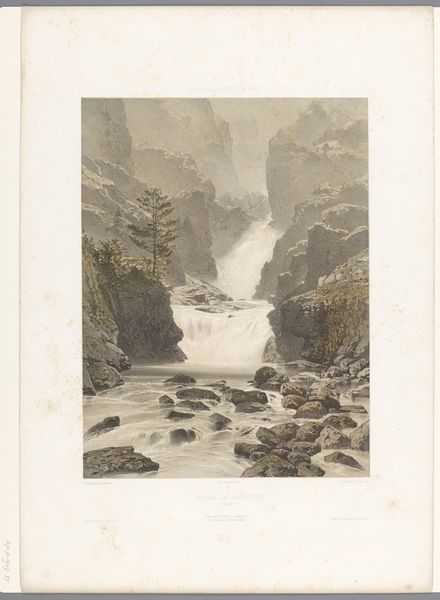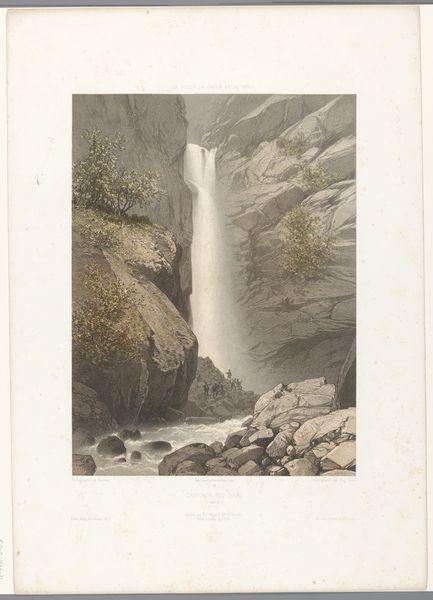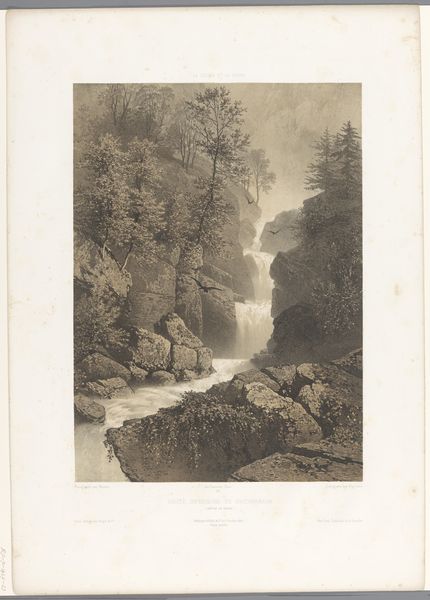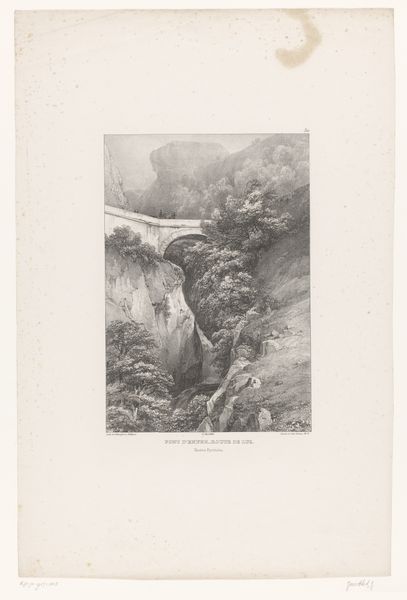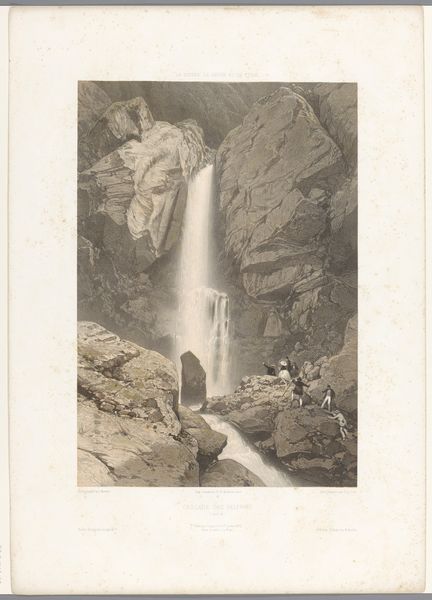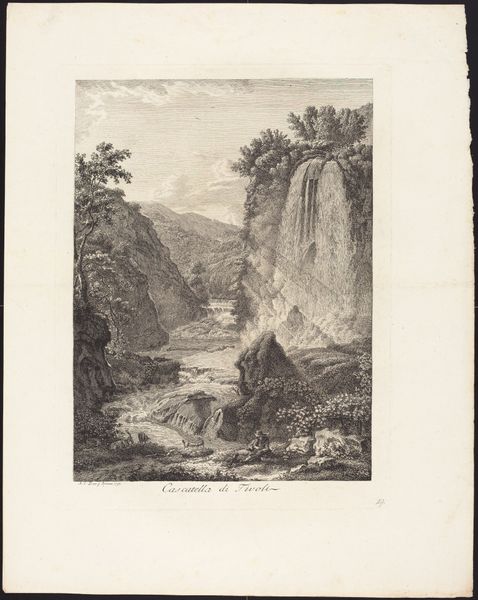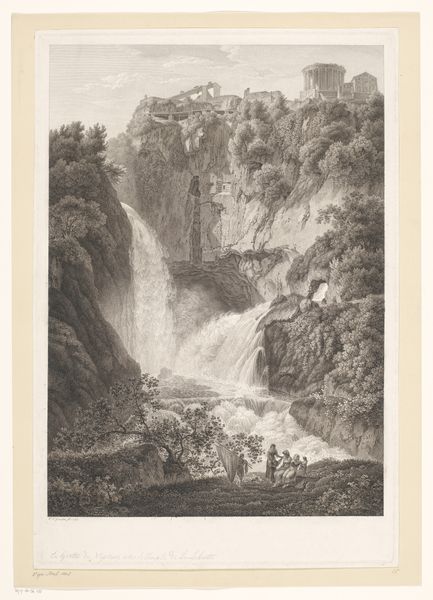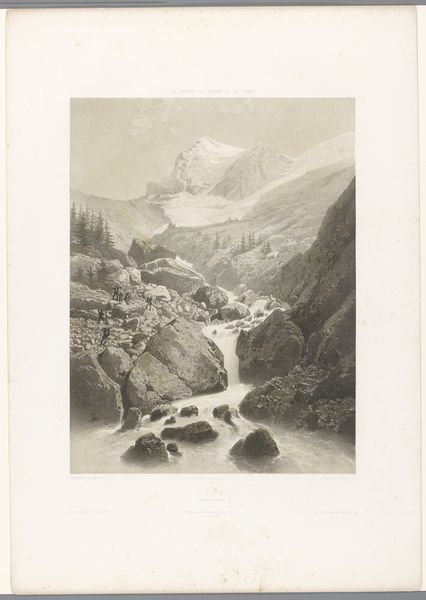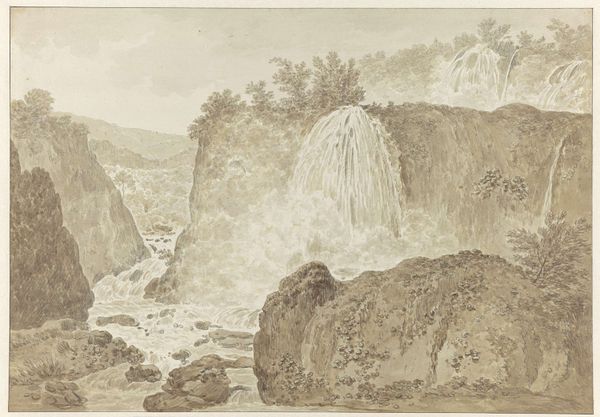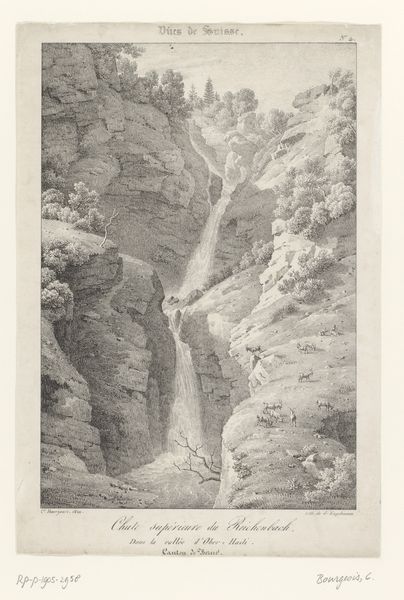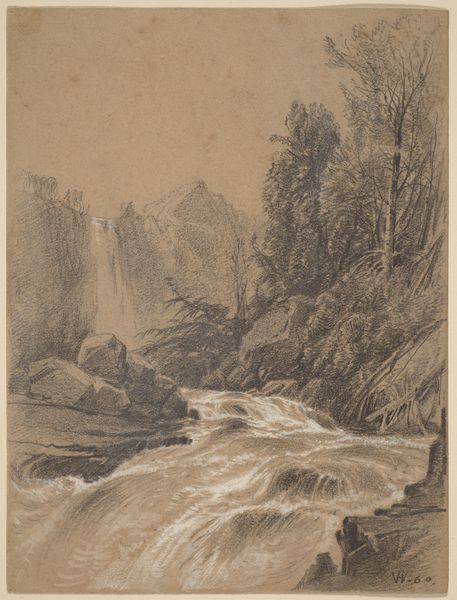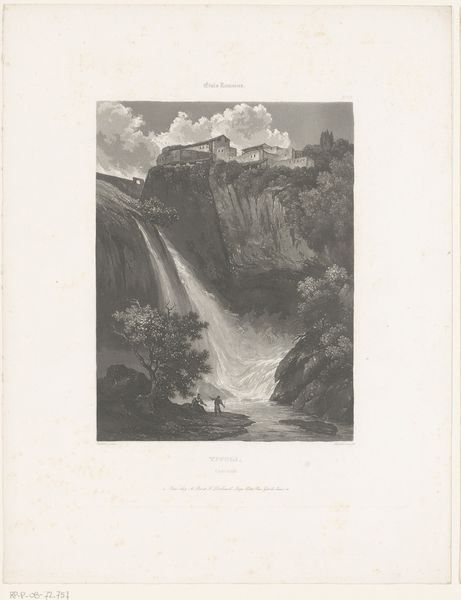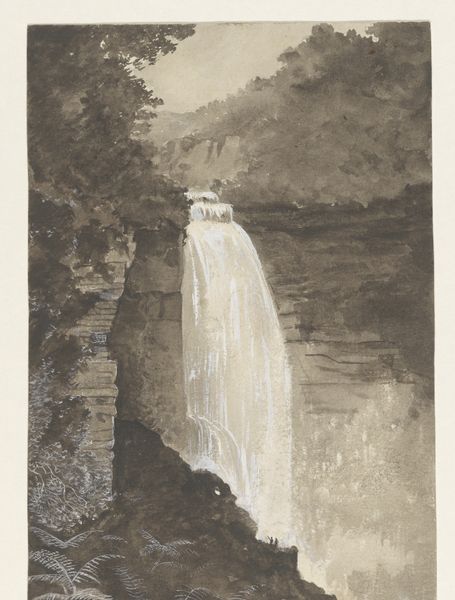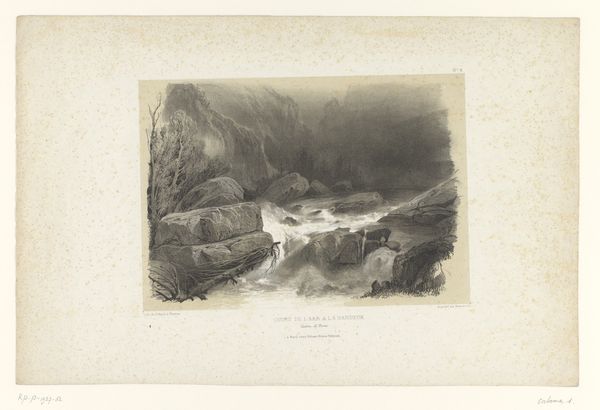
Dimensions: height 565 mm, width 400 mm
Copyright: Rijks Museum: Open Domain
Editor: This is Eugène Cicéri's "View of the Chède Waterfall," created in 1859. It's an etching and, well, it looks almost like a photograph, but with this very deliberate, romantic quality to the light and shadow. How do you approach a piece like this formally? Curator: Initially, one is struck by the dynamic interplay of textures. Observe how the artist meticulously renders the roughhewn rocks against the fluid, almost ethereal, cascade of water. The contrast isn't merely representational; it structures the visual experience. Note also the limited, monochromatic palette which focuses the viewer’s attention on these textural differentiations, almost tactile in their presentation. Editor: So, it’s less about the *what* and more about the *how* something is depicted? The stark contrast does pull you in. Curator: Precisely. Consider the composition: the waterfall bisects the image vertically, creating a sense of both stability and dramatic movement. The artist positions us, the viewers, within the scene, but also slightly removed. Can you identify how the rocks at the lower third do that? Editor: They act like a barrier, almost…making the waterfall feel powerful and distant? Curator: Precisely. Now, consider the etching technique itself. The precision and control of line work, even within the romantic sensibility, lend the piece a certain… stoicism, wouldn’t you agree? Editor: I hadn't thought of it that way, but seeing how contained the wildness is definitely suggests that. Thanks for pointing that out! Curator: Indeed. Considering the medium is key to our understanding, no? I believe, through this analysis of form and material, we uncover its enduring allure.
Comments
No comments
Be the first to comment and join the conversation on the ultimate creative platform.
